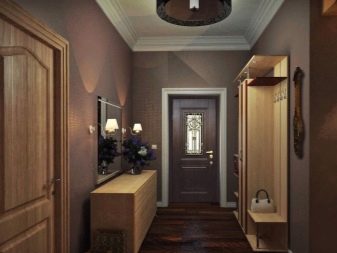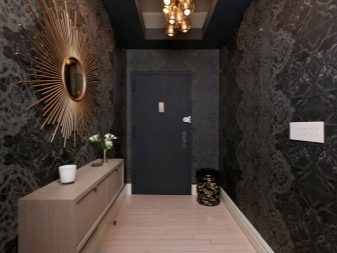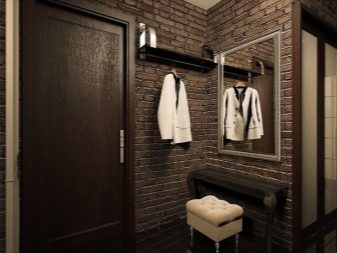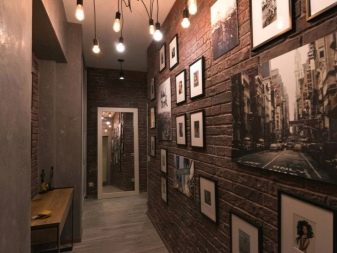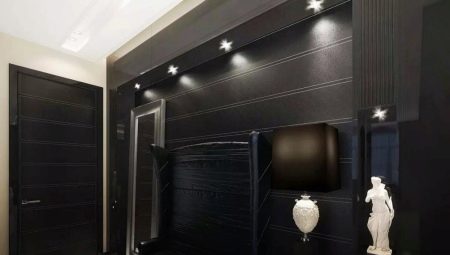Traditionally, the corridor is decorated in bright colors, because this small room has insufficient lighting. Wanting to visually increase the space, homeowners often use beige, blue or light green decoration materials. We are not talking about dark tones at all - many are afraid that the hallway will take on a gloomy appearance, but in vain.
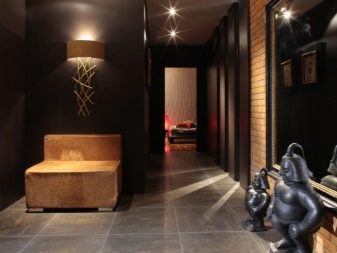
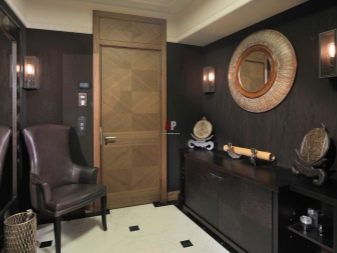
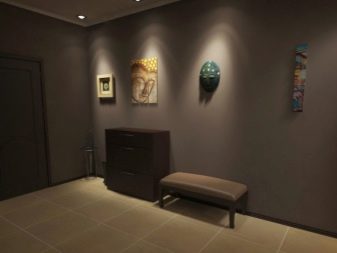
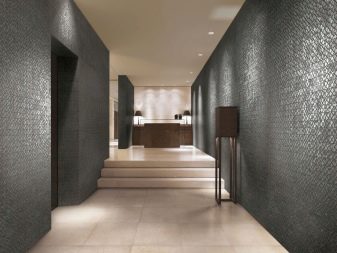
With the proper selection of shades and accents, the dark corridor will look very cozy, stylish and presentable.
Benefits
The corridor is the first room that guests see when they enter the apartment. Its design sets the tone for the entire housing and can tell a lot about the owners, so you should carefully consider the design. As a rule, the area of the corridor is very small, and apartment owners try to make it as light as possible in order to visually expand the space.

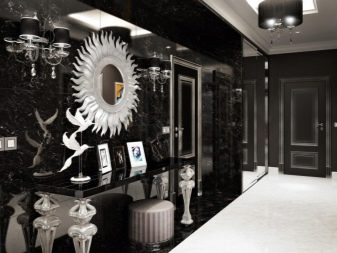
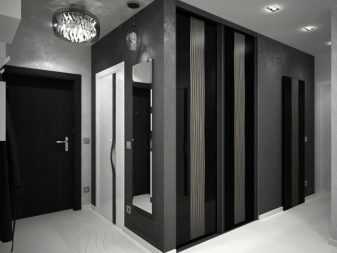
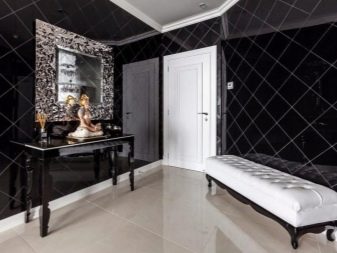
And if the room is quite spacious, and besides, dark colors prevail in the interior of other rooms? In such cases, the corridor of brown, dark green or even black color would allow to combine the design of the apartment into a single design.
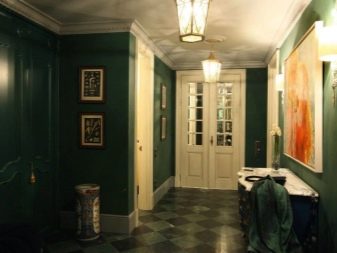
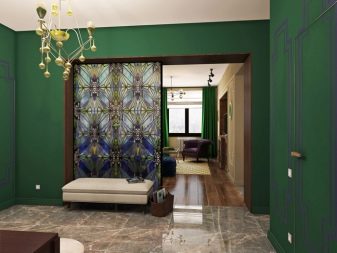
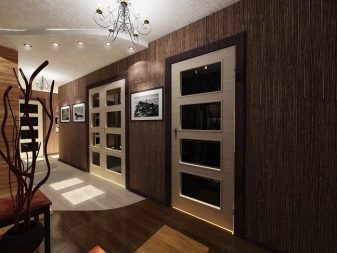
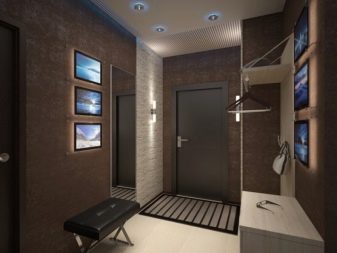
The dark corridor is not only original, but also practical, because it is most susceptible to pollution, which are clearly visible on bright surfaces. And this applies not only to the floor, but also to the walls. For registration of the premises most often use finishing materials of brown, black, dark green and dark blue.
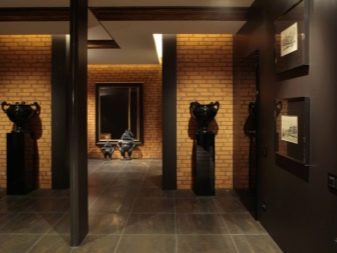
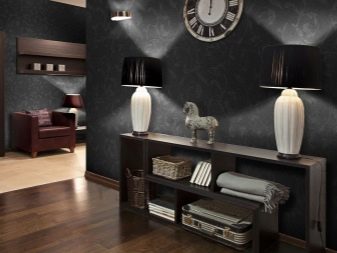
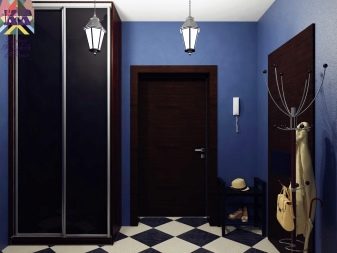
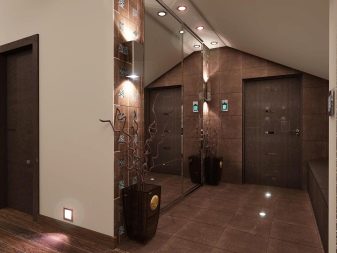
To the interior does not look gloomy, it should be beaten with the right lighting, furniture and accessories. For example, dark wall and floor finishes can be used in combination with light furniture.If there is dark furniture in the hallway, it is recommended to make a beige or gray floor, and dilute the design with light accessories.
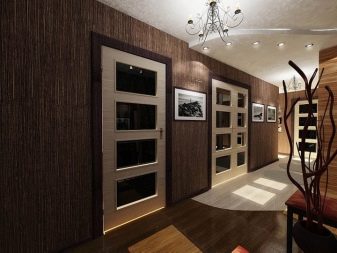
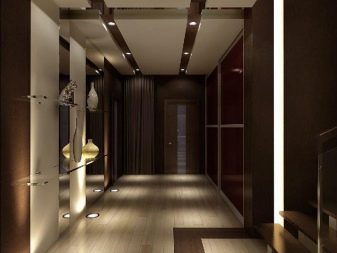
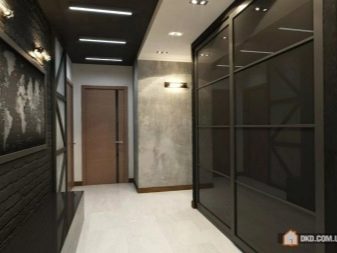
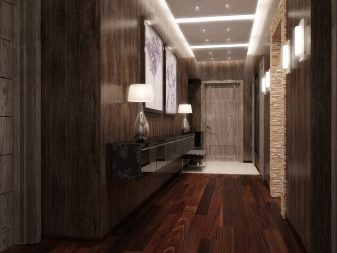
Such color schemes are often used in such styles as high-tech and minimalism.
To create a harmonious design of the hallway in dark colors, experts advise to adhere to some rules.
- For walls and floors in small-sized rooms, you should not choose finishing materials in dark colors - it is better to shift the focus on furniture and accessories. For example, a small corner hallway or shoe shelf in a shade of wenge, a picture of soft colors and a brown or black rug will go well with gray or light brown walls and floors. A special coziness to the corridor will give a wall lamp with diffused light.
- In design projects with a dark corridor, it is recommended to expand the doorways into the living room or kitchen. A good solution would be to create arched openings without doors. This will visually increase the space and provide additional lighting.
- A dark brown or black hallway will not look gloomy if you use mirrors and furniture with a glossy surface. And you can also add a few additional light sources.
- In the dark corridors, accessories with a backlight or glossy finish imitating gold and silver look very stylish. Glass or crystal elements will also add shine and light to the room.
- There should be enough free space in the dark corridor, so large wardrobes are not suitable for it. It is recommended to opt for compact hallways, with a small mezzanine and a shoe shelf.
- To make the room more illuminated, wall sconces with pendants or chandeliers with several shades and shiny elements will help. In this case, when the light is turned on, a lot of glare is formed, which will revive even the darkest room.
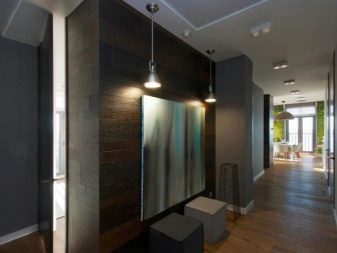
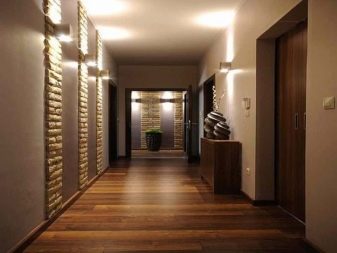
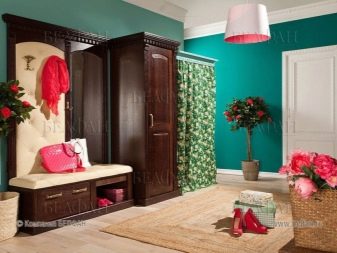
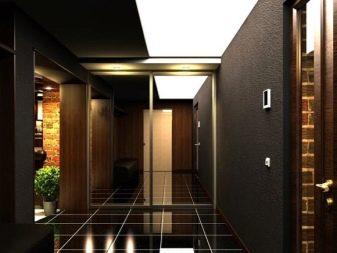
Features of black design
The black entrance hall will appeal to those who love a strict order, do not tolerate compromises and steadily follow their beliefs. Such an interior will definitely give self-confidence and self-confidence, but in order not to get the opposite effect, you need to know some nuances:
- you can not use too many elements of black color - they must be diluted with light colors;
- if the apartment has high ceilings, then in the corridor they can be decorated with black finishing materials;
- to mitigate gloom, it is important to use a large number of glossy and reflective elements;
- mirrors and several light sources are also very important in a black interior.
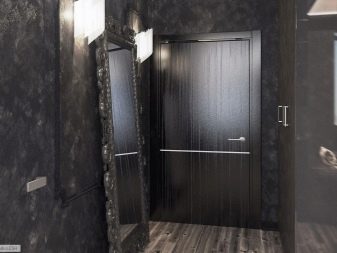
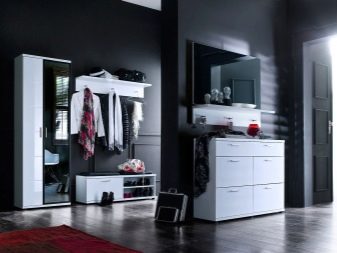
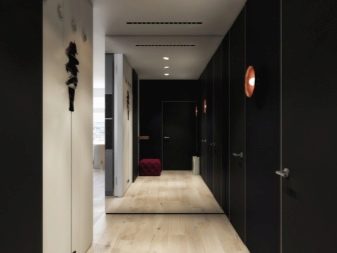
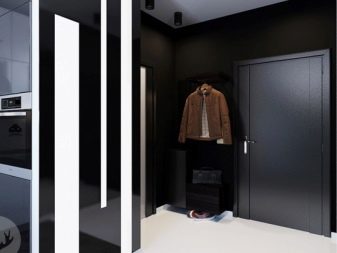
While creating black interior necessarily need to use light elementsfor example, decor or furniture. This color is best combined with white, gray and olive.
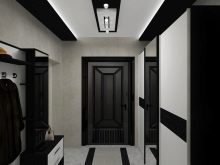
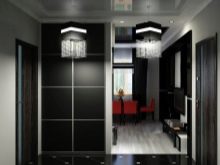
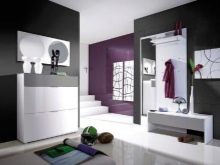
Designers recommend not being afraid to combine different textures, for example, glossy black with matte olive.
Today they are gaining more and more popularity. black ceilings. For their design, tension structures with a glossy canvas are mainly used. To illuminate a room, instead of one light source, many spotlights are installed. But it should be noted that in the case of black ceiling decoration, wall decoration should be light, but at the same time you can make a dark accent on a small area.
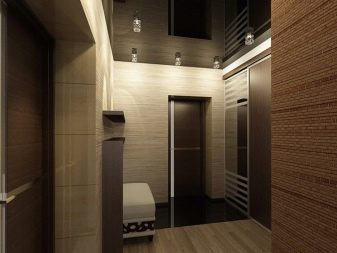
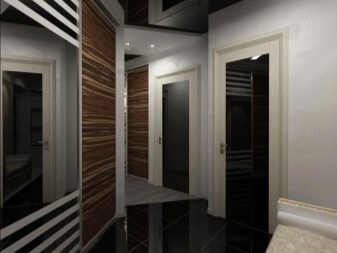
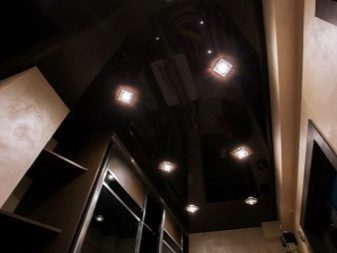
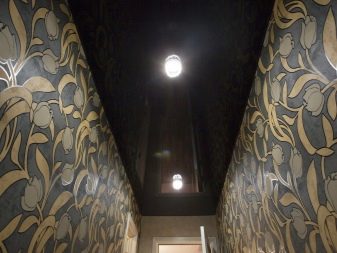
The black ceiling will fit perfectly with the floor of the same color. For finishing, a laminate or parquet is ideal. In some cases, tiles are used, since it is easy to clean, but it is better to cover only a small section of the corridor near the door.
Selection of colors
The design of the corridor in dark colors involves the use of several tones, otherwise the interior will look dull and gloomy. Specialists offer a number of options.
- A selection of similar colors. Using several of these tones looks very stylish.For example, if a dark green color is taken as the basis, then it is best complemented by a lime, olive, lime or turquoise shade.
- A game of contrasts. The design with contrasting colors looks bold, but in order for the hallway to be harmonious, you need to use them correctly. It can be small bright or light accents: furniture fittings, accessories, pattern on the walls and more.
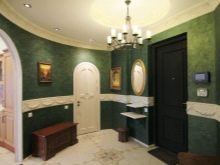
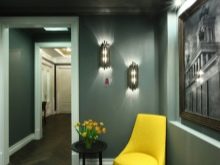
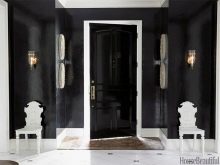
Any materials can be used to decorate the walls of the corridor, but most often apartment owners prefer wallpaper. For a dark interior, it is best to choose solid colors or with an unobtrusive pattern in the form of slightly noticeable vertical stripes or abstract shapes.
Fans of original finishes can use textured wallpapers that imitate the surface of wood, brick, marble and so on. It is important to note that this type of wall decoration itself is a decorative element, so it should be combined with simpler coatings and surfaces.
